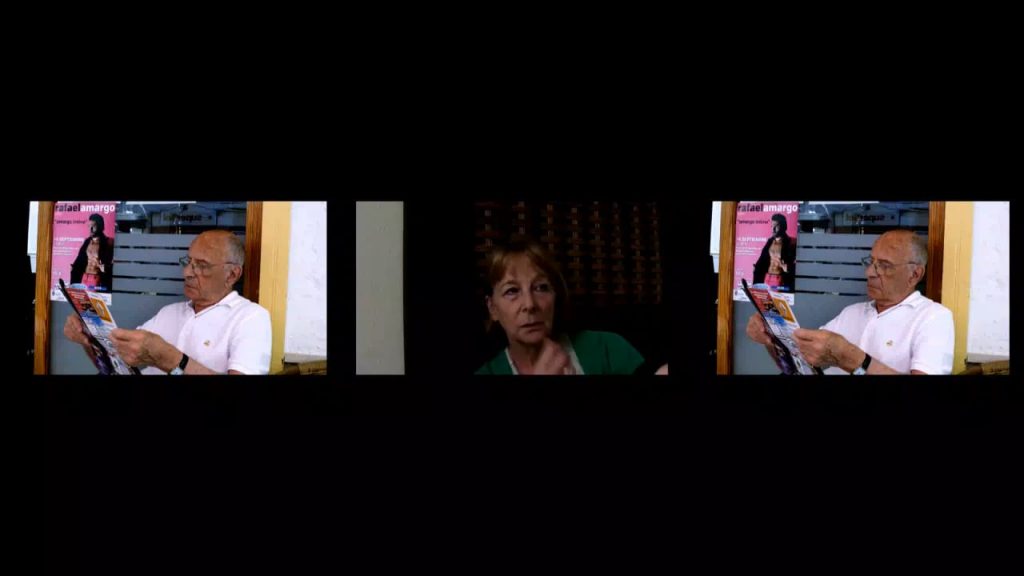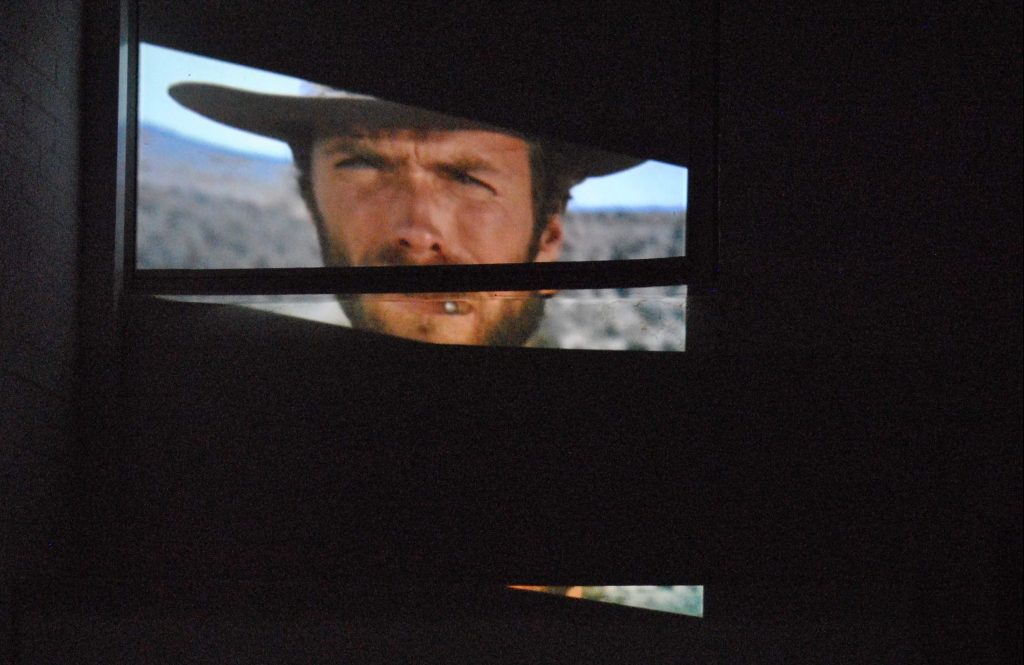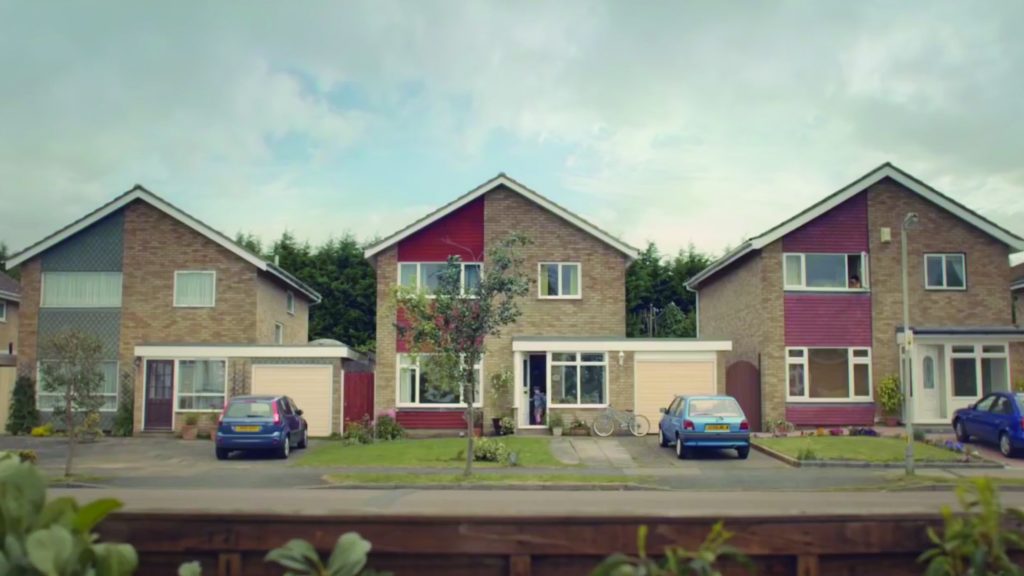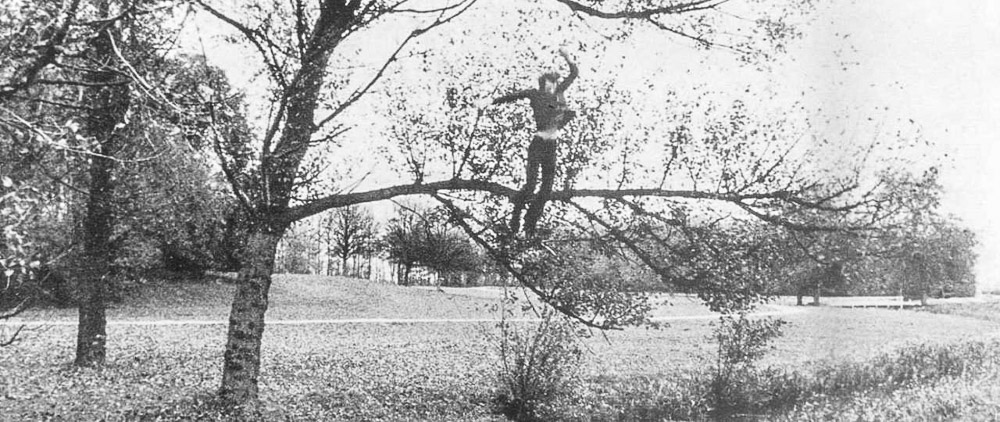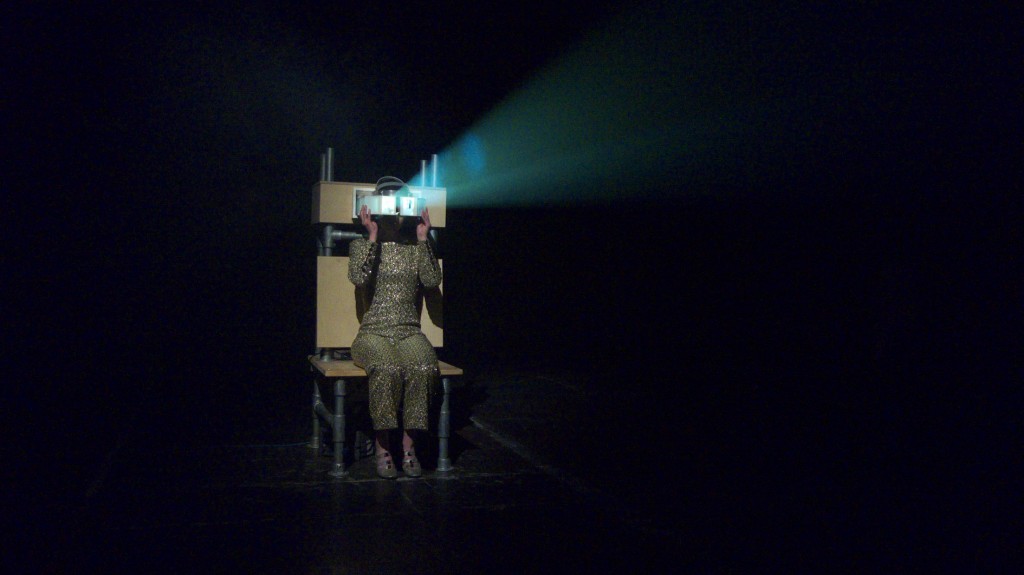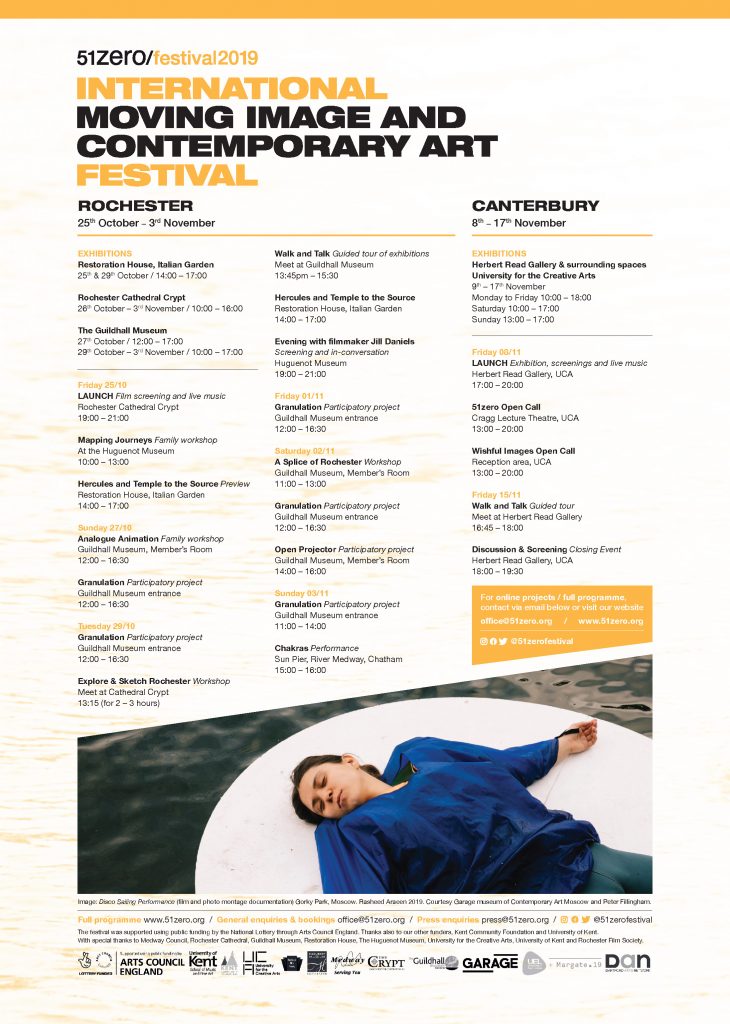
51zero/festival 2019
INTERNATIONAL MOVING IMAGE AND CONTEMPORARY ART FESTIVAL
Rochester and Canterbury
Artists, thinkers, musicians and filmmakers, whose production is between contemporary art and cinema, operating on a local and international level, are presented across Rochester and Canterbury.
Rochester Launch Friday 25th October, Rochester Cathedral Crypt, 7 – 9pm
> Friday 25th October – Sunday 3rd November – Rochester
Admission is free but booking is essential – email: office@51zero.org or call: 07527023649 to reserve tickets
Canterbury Launch Friday 8th November, Herbert Read Gallery, UCA, 5 – 8pm
> Friday 8th November – Sunday 17th November – Canterbury
Admission is free but booking is essential – email: office@51zero.org or call: 07527023649 to reserve tickets
We are proud to announce the next edition of 51zero Festival, opening on the 25th October in Kent, England. Named after the geographical coordinates of Medway, Kent, 51zero Festival takes over historical and cultural spaces in both Rochester and Canterbury, presenting a rich programme of exhibitions, performances, talks and workshops over three weeks. Acting as a meeting point for artists, thinkers, musicians and filmmakers, local and international, 51zero Festival presents artistic production focusing on contemporary art and cinema and promotes the cultural and creative capacity of the region. This year, the festival extends across Rochester Cathedral, Restoration House, the Guildhall and Huguenot museums and Rochester High Street. In Canterbury, it will populate the University for the Creative Arts campus including the Herbert Read Gallery. The festival will launch at Rochester Cathedral’s crypt on Friday the 25th October, with an evening of screenings accompanied by live music featuring some of the leading musicians in the UK, curated by Margherita Gramegna, alongside Peter Fillingham’s The rainbow Buns, 2016.
For its 4th edition, the festival collaborates with a wide range of emerging and established artists, practitioners and musicians from the area and beyond, invited or engaged via Open Call. The Rochester area will see work by artist Dan Rees, who will be presenting Chalk, 2018, at Rochester Cathedral’s crypt, and Matthew Darbyshire’s Deposition Model No.1 : Farnese Hercules, 2016, situated in the unique surroundings of the Italian Garden at Restoration House, created by owners Robert Tucker and Jonathan Wilmot, who will showcase a newly constructed classical temple in dialogue with Matthew’s sculpture. David Goldenberg will present a new work Granulation, an online and installation project situated in the undercroft area of the Guildhall Museum, which invites participation World-Wide, to remap the art world or ‘body of art’ and to break it down into its ‘molecular parts’. Rochester audiences will be invited to reassemble these building blocks into a new language of art. The main room of the Museum will host Rasheed Araeen, a pioneer of minimalist sculpture in Britain, who will present Chakras, 1969-70, 16 painted wooden discs and a reconstruction of its performance – taking place at San Pier, on the river Medway, alongside documentation by Peter Fillingham of the performance Disco Sailing presented recently at the Garage Museum in Moscow, and a text/photo collage by its curator Valentin Diaconov. In the adjoining room, there will be works by the Dutch artist Matthijs de Bruijne, whose work touches upon socio-political issues and critical collective consciousness. British filmmaker Jill Daniels will present her films at the Huguenot Museum, exploring memory and place through fictional enactment and documentary realism.
In Canterbury, works by John Peter Askew create arrangements of ‘filmic’ images of Russian life, and Lique Schoot’s online project Who am I Tomorrow presents a series of self-portraits. Film programmes at the UCA lecture theatre will showcase entries from a themed Open Call titled Wishful Thinking, curated by Jill Daniels, Matthias Kispert and Inga Burrows, as well as work from a second open call including students from University of Kent. Social Morphologies Research Unit present their work Morphologies of Invisible Agents, making visible the forces behind political movements and social change. Bird Saunders, Tanja Jurican, Alena Pratasevich [online project] and the Iranian-British artist Maria Kheirkhah will also present their works in the Canterbury campus with Morag Keil and Georgie Nettel’s work The Fascism of everyday life, while the Singaporean English artist Steven Wong will introduce us to his new platform for ideas MAPP and will contribute to the Granulation project.
Through placing artwork in public settings and outdoor spaces across the cities, the festival aims to take the art to where the people are, encouraging conversations and active involvement of local and visiting public as well as engaging audiences with the character and the heritage of the area. Workshops led by the artist Hannah Whittaker, invite local people and families to engage with the festival’s artworks and Ioana Pioaru’s drawing workshops embed participants within the unique landscape and history of Medway.
51zero Festival is an Arts Council funded project that aims to introduce highly resolved, relevant and important artworks and films to the Kent area, particularly in Rochester, where 51zero Festival activities are unique in filling a gap in Medway’s art provision. The festival offers opportunities for regional artists and graduates to exhibit with established, international artists. 51zero Festival has a successful track record of creating platforms for exposure and opportunities for emerging talent, engaging young artists in activities meaningful for their professional development. Working from within the region of Kent as the project’s base, 51zero Festival presents programmes of exhibitions, events, projects and touring activities through partnership and co-production with cultural organisations in the UK and overseas.
Among the notions the festival programme questions is whether art today can actually be an effective vehicle for fresh thinking. Looking at the systems that make up the way art is shown, exhibited and talked about, the artists that the festival presents examine whether these systems promote a return to the same ways of doing things, held back by conventional understandings of what is expected of artist by the political and economic context they work in.
In the words of Margherita Gramegna, Director and co-curator of the festival: “51zero Festival contributes to the artistic landscape of Medway and Kent fostering a growing interest in artists’ moving image and contemporary art, engaging audiences and cultivating emerging talent, to build cultural value and a legacy for the area. This year’s project is ambitious and forward-looking in view of Medway’s aspiration to be the next UK City of Culture”.
Co-curator David Goldenberg adds: “The festival comprises invited artists, filmmakers, open call, student work, public activities, workshops and talks, where all activities are of equal importance and act as a catalyst for thinking. We want to showcase qualities inherent to 51zero Festival that are relevant to the location and people, rather than importing and adopting pre-existing models. The festival also attempts to look at what a 21st-century art practice is and how reality is seen and filtered through art’’
51zero Festival’s long standing partner is the University of Kent. Peter Hatton, Programme Director of MA Event and Experience Design, comments: “The School of Music and Fine Art at the University of Kent considers 51zero Festival to be an important regional and international organisation that we are fortunate to have had a long and productive association with. Staff and students have been involved in their touring programmes and previous festivals editions since 2012. Going forward, with the development of new programmes and departments here at Medway in the Historic Dockyard, we see the relationship with 51zero Festival continuing and strengthening”.
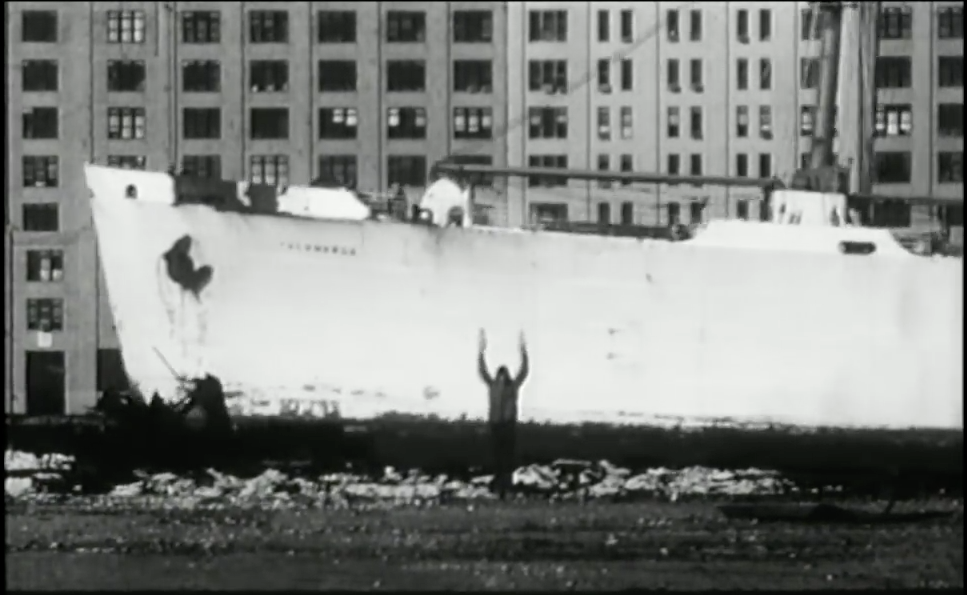
Joan Jonas, Song Delay, (1973), film still. © Jonas Jonas
Biographies:
Margherita Gramegna, Director & Co-Curator
Margherita Gramegna is a UK based Italian artist filmmaker and founder of 51zero organisation, under which umbrella she has generated collaborative artists’ lead initiatives since 2010. Margherita’s focus for 51zero is international cultural exchange; alongside 51zero Festival she produces and curates Voyager’s cross-border projects and touring programmes. She has collaborated with the Medway and Valenciennes International Relations’ Programmes and was involved in European initiatives in Northern France, presenting projects which have won a number of bursaries (Recreate, ICR, a-n, and Arts Council England). In Italy she worked with graphics and later video, following a creative collaboration that led to the founding of ‘Ripetta 9’ artists’ studio in Rome. She has won the Emergendsee prize in 2006 in Berlin and was nominated for the Rouse Kent Award for her public art site-specific projects (Art at The Centre). Since 2006 her film work has been shown in the UK and Europe (Whitechapel Gallery, Southbank Queen Elizabeth Hall, Raindance and Eat Our Shorts Festivals, London; Cannes 60th SFC; Loop Festival, Galeria Parc de l’Espanya Industrial, Barcelona; Zlin Festival, Czech Republic). In 2019 she was invited for a collaborative artist residency at Fondazione Bevilaqua La Masa, with a film exhibited at Palazzetto Tito, Venice.
David Goldenberg, Co-curator & Artist
Since 1998 David Goldenberg has developed the concept of Post Autonomy. He uses his practice, through the scheme of Post Autonomy, to pose a wide range of questions around the issues of art evaluation, its hidden forces and set of rituals that we associate with it. According to David, the role art has is to shape and organise the ‘look’ of the West. How and where do we start to work out what this complexity is? David uses the framework of Post Autonomy as a theoretical potential space and a platform to construct a critique, and the attributes such a critique would need to realise to ‘interrogate’ the existing formation of art. David uses installation, assemblages, text, speech and online platforms in the production of his artistic work.
Matthew Darbyshire, Artist
Matthew Darbyshire’s practice investigates the fundamental question of the object’s status and its symbolic or political charge. He questions the archetypal object in its relation to domesticity (Blades House, Gasworks, London 2007 and Showhome, Zabladowicz Collection, London 2012), trading (IP, Hoog Catharijne, Utrecht 2013 and Everything Everywhere, Freize Projects, London 2011), architectural or social space (Funhouse, Hayward Gallery, London 2007 and Palac, Tate Triennial, Tate Britain 2008) or the museological (Oak Effect, The Shipley, Gateshead and Matthew Darbyshire and the W.H Ismay Collection, Hepworth Gallery, Wakefield 2013). Lately however, his attention has been focussed on the object as an image, and on the image as an object. As a result, his work seems to have moved slightly from large-scale installations, conceived as unified physical and social environments, to more autonomous sculptural elements, still incorporated in carefully conceived displays and groupings, but trying to unravel the symbolism attached to them.
Robert Tucker and Jonathan Wilmot, Owners of Restoration House, gardens and Temple.
The gardens of Restoration House have been transformed over the past 25 years in the ownership of Robert Tucker and Jonathan Wilmot and variously described as ‘breath taking’ and ‘a masterpiece ‘ (Sir Timothy Clifford). On the upper terrace the contemporary sculptor Matthew Darbyshire created a life size copy of the Farnese Hercules, becoming the symbol of the owners’ endeavour to recreate this lost Italian garden, first built in the first half of the C17th. For the building of the Temple, 17th century Tuscan order English oak columns have been incorporated in a green oak structure. Just as the garden itself has been built up from surviving elements of the original design, so too has the temple.
Peter Fillingham, Artist
Sculptor and curator, his practice includes site-specific, object-based installation, regeneration and cultural events. During the last three decades he has worked, collaborated and exhibited with many creative figures. His studio practice is related to a theatre of sculpture (the processes through which ideas pass towards being realised as material/complete). Since 1997 Fillingham has played a large part in ‘making present’ artistic events on the peripheries of perceived cultural epicentres, notably in Kent and Nord Pas de Calais, where his work has been highlighted in publications by Art Historian and writer, Jane Lee. Known for his sensitivity in situating artists – through exhibitions and events – to new places and spaces, in turn, he is able to introduce those places – and art – to broader audiences. He is highly sympathetic to already existing ad hoc situations, which are not essentially changed through his interventions, but sit side-by-side with them. His artistic practice has played an informed critical role in his teaching practice. He is a former Head of the 3D Pathway (Sculpture) at Central St. Martins and a former Chair of Fine Arts at Parson’s Paris. He is Editor-at-large at /Seconds.
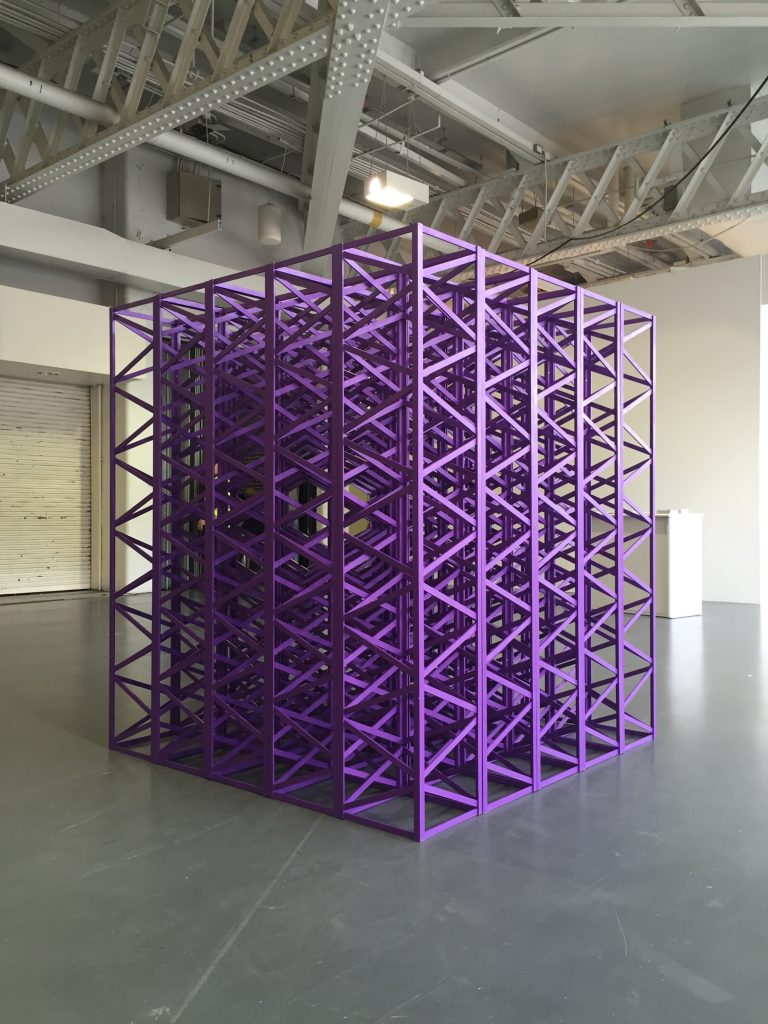
Rasheed Araeen, Farunghi Mahal (2016), indigo painted wood. © Rasheed Araeen
Rasheed Araeen, Artist, founder of Third Text
Born and educated in Pakistan, Rasheed Araeen (b. 1935) trained as an engineer before moving to Europe in the 1960s to become one of the pioneers of minimalist sculpture in Britain. However, he received no institutional recognition for his contribution to the modernist discourse in this country, being side-lined as a non-European whose work was consistently evaluated within the context of post-colonial structures. As a result of this, in the 1970s and 1980s his work – in performance, photography, painting and sculpture – began to develop into overtly political content which drew attention to the way in which black artists were invisible within the dominant Eurocentric culture. Geometric structures in which vertical and horizontal lines are held together by a network of diagonals (like the bracing struts used to strengthen latticed engineering constructions) play on the links between Eastern and Western thought and the frameworks of social institutions and aesthetics. Photographs overlaid by or held within these geometric structures, bring in the personal and psychological and relate the human individual to the social structure in which they exist.
Valentin Diaconov, Curator
Curator of Garage Museum of Contemporary Art, Moscow, Russia, art critic for Frieze and other art journals.
Matthijs de Bruijne, Artist
Matthijs de Bruijne’s artistic practice is based in and is part of, political involvement. His work explores the relations between economy, culture and social life in order to achieve critical collective consciousness. During the last few years, it has taken the form of collaboration with trade unions and other labour organisations. His first working period in Argentina in 2001 can be seen as a major and radical turning point in his practice. Amidst social conflicts and in the social reality of a bankrupt state, it became apparent that the position of the artist should be more than just that of a reflecting outsider and that art could very well be a dynamic form, actively at work within political struggles. In the years that followed, De Bruijne has continued to shift his practice, working on a number of projects about the rise of right-wing populism in the Netherlands. In these works, the issue of labour in relation to migration became increasingly prominent. This summer he made a new shadow-play video with a clear message for the new Dutch government.
Dan Rees, Artist
Dan Rees (b. Wales, lives in London). He practice spans a variety of different mediums, painting, sculpture photography and video. He studied at Camberwell College Of Arts, London Institute (2001-2004) and at Staatliche Hochschule für Bildende Künste Städelschule, Frankfurt (2007-2009). Recent exhibition include: Disguised as a Dog, Assembly Point, 2018, Ruins of the Cambrian Age, Tanya Leighton, Berlin, Depressed Earth, Múrias | Centeno, Lisbon, Road Back To Relevance, Nomas Foundation, Rome, both 2016; Stimulate Surprise, Tanya Leighton, Berlin, Think Local Act Global, MOT International, Brussels 2015; Top Heavy, T293, Rome, Kelp, National Museum of Wales, 2013.
Jill Daniels, Filmmaker
Jill Daniels is an internationally renowned British filmmaker. Her innovative films explore memory and place through fictional enactment and documentary realism. She takes an autobiographical approach to her work in representing herself in her dual role as maker and subject, acting as a cultural guide in an exploration of the social world. She has won many awards, most recently best documentary film award for Breathing Still (2018) at Tolpuddle Film Festival in 2018; in 2014 she won best experimental film award for My Private Life II (2013) at the renowned Ann Arbor Experimental Film Festival in the USA. Her book, Memory, Place and Autobiography: Experiments in Documentary Filmmaker (2019) explores her work from her student days to the present and charts the trajectory of British independent filmmaking from the mid-1970s to the present growth of new online distribution outlets and new media through digital technologies and social media. She teaches film at the University of East London.
John Peter Askew, Artist
British artist, John Peter Askew (b. 1960) works with the camera to create dense, poetic images of domestic life, and of the historical forces that shape who we are. Since 1996 he has photographed the Russian city of Perm, the easternmost city in Europe, as part of a project investigating the state of modern Europe. While his work We is an extended epic portrait across generations of a single-family, the Chulakovs, these photographs transcend their particular circumstances. Askew pays attention to our ‘best selves’, asking us to imagine the possibility of a better, more playful world, and pointing towards who we might yet become.
Lique Schoot, Artist
Lique Schoot makes self-portraits in the form of photographs, paintings, objects, films and installations. These works stem from the ‘LS diaries’, the daily photographs she has been making since 2003. In it, her personal identity is subject to a ruthless representation of the self. Lique is a multidisciplinary artist. She works in the tradition of conceptual art. Since her graduation, she has used the self-portrait as a vehicle for exploring the nature of existence. Her work shows relevant issues; such as identity and gender.
Matthias Kispert, Artist
Matthias Kispert is an artist and composer working in London. His work encompasses video, sound, audio-visual live performance, improvised music, installation and interventions in public space. Coming from practice in sound art and electronic music, his recent work encompasses a broader range of media and is often motivated by interrogation of socio-political and economic conditions. His works and collaborations have been shown at MU, STRP Biennial, Sonic Acts (Netherlands), Get It Louder, HK Arts Centre, I/O Gallery (China), Moscow Architecture Biennale (Russia), LEV (Spain), USC, TriBeCa Film Festival, Eyebeam (US), Royal Festival Hall, onedotzero, AV Festival, ISEA, Sound and Music Expo, Kings Place, Cafe Oto, Wet Sounds (UK), EMAF (Germany), Inverted Worlds (Lebanon), Itaú Cultural, FILE, Multiplicidade (Brazil) and MOD (Mexico). He is a lecturer in Sound Art at the University of Arts London and a PhD candidate at the University of Westminster.
Inga Burrows, Filmmaker
At the heart of Inga Burrows’ practice is a recurring theme of positive and playful disruption of the performance of identity. Utilising her filmmaking skills to probe the inter-subjective reality of urban existence, at certain times she points the lens towards herself and frequently she succeeds in attracting people she is interested in working with into her creative world, be they workplace communities, colleagues or peers. Through such encounters with herself and others, she mines the raw material of the subjective experience for smelting into artworks. Artworks which may take the form of video work as with Folk Glance and Veil Trance (2011), a sculpture, performance, or conceptual piece, sometimes in combination, as in this mixed-media gallery installation Offset (2014). This project began as a self-instigated 6-month artist residency in the fictional landscape of the Welsh language Soap Pobol y Cwm. One of the first exploratory activities Burrows initiated was the Scentology Laboratory, into which she invited the fictional cast to select fragrant substances that would become the ingredients for their bespoke soap, conceptually representing each individual character’s olfactory biography.
Social Morphologies Research Unit
Morphologies of Invisible Agents explore the relationship between the invisible and its tangible realisations in contexts of acute political change: from rampant capitalism, neoliberal reform and austerity to protest and revolution. The exhibition is the outcome of the Social Morphologies Research Unit’s (SMRU) long-term dialogue between artists and anthropologists, mediated by their shared use of diagrams as catalysts for thinking and doing social change. Collaborating pairs of artists and anthropologists use the shifting social tensions they detect in an array of settings as their point of departure.
Birdy Saunders, Artist
Birdy Saunders lives in the UK and has completed a BA [Hons] in Fine art at Plymouth University.
Tanja Jurican, Artist
An artist from Pancevo (1980), whom graduated as a painter from the Academy of Fine Arts in Belgrade (2009). Currently enrolled in the PhD program at the Polymedia Art Department of the Centre for Interdisciplinary Studies at the University of Arts in Belgrade. Since 2006 she has been actively taking part in the domestic and foreign art scene. She was a finalist of Mangelos Awards in 2010, the winner of Mangelos Production Prize for 2011, and the scholarship holder of Kulturkontakt Artist in Residence program in Vienna, in 2011.
Alena Pratasevich, Artist, curator
Alena is a Photographer, artist and curator. She was born in 1979 in Minsk, Belarus. This year she curated the Belarus Pavilion for the Venice Biennale. She has been included in group exhibitions across Europe. 2019 Genitive. She has curated many exhibitions across Belarus.. 2019 The Scratch, solo exhibition by Igor Savchenko, Museum of the Belarusian Cinema History, Minsk, Belarus. 2019 Genitive. Part 2. The National center of contemporary arts, Minsk, Belarus. 2015-2017 Concrete Delusion, international art-project by Manuel Schroeder, curator of belarussian group, Belarus/Germany
Maria Kheirkhah, Artist
Maria kheirkhah is an Iranian British artist, curator and academic who works with installation and performance to investigate systems of knowledge, power and culture. Her multidisciplinary art practise and her specific focus on decentralising the generalising cultural forms of categorisation, explores the representations of the so-called “Middle Eastern” female identities through a practice which is generated by the interplay of history, politics, media and visual arts within contemporary Western visual culture. Among her numerous exhibitions and presentations are: Conversation Pieces, 1001 questions, Tate Britain 2009; The Psychology of Fear, 198 Gallery 2008; The Anatomy Of Ignorance, Current thinking, Tate Modern 2007. Kheirkhah lives and works in London and is currently pursuing her research at Chelsea College of Arts, UAL, UK.
Morag Keil, Artist
Keil works across installation, film, painting and drawing, and often collaborates with fellow artists. Her work frequently adopts a lo-fi, pared-back aesthetic, incorporating everyday objects and found materials alongside digital innovations that affect domestic life, such as home automation.
Georgie Nettel, Artist
Georgie’s solo exhibitions include presentations at Reena Spaulings, New York (2019), Aesthetik01, Berlin (2019), Kunstbunker Nürnberg (2018) and Lars Friedrich, Berlin (2017), among others.
Steven Wong, Artist & Curator
Steven Wong, artist and curator, started MAPP (multiple autonomous platforms presents) as a platform for ideas. Wong has worked, significantly for his practice, from a global perspective, staying in Los Angeles, London, Hong Kong, Singapore and Bangkok, and constantly travelling between, a move which seeks to interrogate the western episteme from non-fixed viewpoints. In this he has absorbed and interrogated the many strategies employed by institutions of dominance. Presenting the film works of Straub/Huillet at UCLA as a work of conceptual art, where he collaborated with Christopher Williams and produced performance, catalogue, text and image around the works. The artists only allowed the films to be staged if they were complete as a total oeuvre, providing Wong with a ‘forced choice’ that demanded intellectual and material rigor. Wong’s project Cinema City (derived from stills from the history of Japanese cinema) attests to the meticulous attention that mediates personal expression of image and material vis a vis impersonal or machine representations and technologies. Wong currently directs MAPP as a fluid artists’ project space, having recently undertaken projects in Singapore and Beijing. His recent exhibitions include 100 Artists See God at the ICA, London, curated by John Baldessari and Meg Cranston.
Workshops
Ioana Pioaru, Artist & Workshop Facilitator
Ioana Pioaru is an artist, researcher and illustrator working with a variety of media ranging from traditional drawing and printmaking to 3D printing and virtual reality holography. Ioana’s passion for traditional architecture and the beautiful British landscape is reflected in her recent ink drawings and watercolours. Other projects explore the boundary between drawing and sculpture and the capacity of isometric perspective to generate optical illusions. As part of her doctoral research, Ioana aims to redefine the concept of maximalism in art. Her maximalist artworks consist of pseudo-realistic machinery and eerie architectural structures. Ioana will be running a workshop drawing local architecture in Rochester, engaging the public. She aims to show the results of the website as part of a small exhibition.
Deborah Humm, Artist & Workshop Facilitator
Deborah Humm investigates the internal nervous system’s communication method, focusing on (mis)communication between brain and body, caused by the demyelination breaking connectivity and resulting in profound, perplexing and random external manifestations. Heightening the awareness of this to others through a combination of drawings and conceptual artworks, many having underlying currents of frustration and irritation: at present concentrating on the sensation of overstimulation. After completing her BA(hons) in Fine Art at UCA Canterbury in 2013 she was awarded the Elfriede Windsor Scholarship to continue directly onto a Fine Art Masters.
Hannah Whittaker, Artist & Workshop Facilitator
Hannah Whittaker is a performance maker, creating interactive installations, one on one encounters and digital performances. The form of her work may fluctuate from high-tech digital installations to very basic one to one encounters, but her focus is always on creating an interactive experience for an audience member. Hannah has also been delivering workshops and working on community based projects for over a decade, delivering programmes for organisations such as Greenman Festival, Central School of Speech and Drama, Brunel University and The Salvation Army. Hannah was first involved with 51zero when performing in the 2012 festival edition and has remained an active associate ever since.
51zero continuously introduces highly resolved, relevant and important artworks and films to Medway and Kent. The festival offers opportunities for regional artists and students to exhibit with established, international artists and takes the work to where the people are, encouraging conversations and active engagement with local and visiting public.
51zero/festival 2017
DECREATION
October 27th – November 2nd
This year’s programme launched at Rochester Cathedral, presenting a rich programme of artists’ films and live music scores, followed by installations, talks and performances, alongside workshops, animations and a dedicated children’s programme, at Guildhall Museum. Screenings took place at Huguenot Museum and a final showcase of films by emerging artists, as part of Open Projector, was hosted by the University of Kent, as well as a final discussion forum, bringing together a mix of international and emerging artists, local students and graduates, curators, critics and musicians.
The festival presented a cross-section of work from different generations of artists, many having taken part in Biennials, and raised aspirations of emerging talent, offering platforms for exposure to up and coming artists and students from the region and beyond.
51zero/festival 2017 took place in various venues and locations across Medway.
Programme details can be found here
51zero curates an international contemporary arts festival in the South East of England and programmes cross-border events and exhibitions of artists’ film, moving image and digital-art connecting to national and international arts programmes.
51zero/festival 2014
THE OTHER SIDE OF HERE
October 10th-12th
On the 10th-12th October 2014, 51zero presented 51zero Festival 2014 – The Other Side of Here, with a groundbreaking new programme of artists’ film, moving image and digital art that took place across the Medway towns of Strood, Rochester and Chatham.
The theme ‘The Other Side of Here’ encompassed a theatrical and sensory experience of Anglo-French artists’ film, moving image, digital art and cinema – exploring and celebrating cinema and the moving image beyond the single screen. Informed by European-wide creative partnerships, 51zero organisation works with UK South East cultural agencies and their counterparts in Northern France to form artistic links between the distinct regions of Medway and Northern France.
With a focus on animating public space and engaging new audiences through a series of site-specific installations and special screenings, the festival extends the traditional art experience by showing work in non-traditional art spaces as well as museums and galleries. It has a carefully honed programme encompassing work by British and French artist filmmakers, and has a mission to create out-of-the-ordinary cinematic experiences of the kind you won’t find in traditional cinema.
The festival launched on the night of Friday 10th October at Rochester’s Guildhall Museum with a newly curated film programme accompanied by the world premiere of a new musical composition especially composed by James Taylor, performed live by the acclaimed James Taylor Quartet and Choristers from Rochester Cathedral Choir. Turner Prize winner and Jarman Award nominee Laure Prouvost presented three films, one of which won the Principal Oberhausen Prize.
2014 marked the 20th anniversary of the work of Derek Jarman and 51zero Festival joined this national celebration through the presentation of a programme of Film London Jarman Award Film Commissions (2009-2013). The short films of up to three minutes in duration, were commissioned for Channel 4’s 3 Minute Wonder and Random Acts strands as a result of the annual Film London Jarman Award. Artists include: Anja Kirschner & David Panos, Brad Butler & Karen Mirza, Emily Wardill, Lindsay Seers, Luke Fowler, Nathaniel Mellors and Shezad Dawood.
Artistic Director Margherita Gramegna says: “51zero festival extends the moving-image experience across Medway and its communities by showing work in non-traditional art spaces such as museums, empty shops and churches, closing the gap between art and its audiences. What excites me about the project is that it enables the introduction of a form of art virtually absent in the area, connecting Medway and the artists from here to national and international arts programmes.”
Collaborations are reflected through a programme of single screen work, performance, and quirky installations by students, alumni and lecturers from University of the Creative Arts, University of Kent and L’École Supérieure d’Art et Design Le Havre-Rouen, including TEA and Jamie Jenkinson, together with established and emerging artists from France, Medway and further afield, such as Catherine Linton.
Chatham’s Sun Pier House and POP Creative Space, hubs of the new Medway Creative Quarter, hosted work by prominent visiting French artist filmmakers Alix Delmas and Thibault Jadenne, as well as a participatory performance by Stéphane Trois Carrés. Bertrand Gadenne animated POP with the startling street-level installation Le Poisson, while at Sun Pier, Cine Boat, a two-seater Orkney Spinner transformed into a mobile cinema by two recent UCA graduates, Loren Beven and Katryn Saqui, presents Michael Tyburski’s award winning film Angelfish. Live events extended to St Nicholas Church in Strood, where Edwin Burdis presented a new video work accompanied by a live organ soundtrack performed by in-house organist Ken Reynolds.
A host of shorts and documentaries at Princes Hall, further highlighted the French presence which graced much of the festival programme including a humorous animation for young people at Medway Little Theatre. Amy Dickson’s ‘Film and Stitch’ workshop also welcomed a young audience and invited participants of all ages to combine textile and filmstrip to create their own moving-image, in the spirit of experimental animator Len Lye. Lastly, the public was invited to curate the closing strand of the festival with ‘Open Projector’, an evening of films brought in by audiences and screened live during the festivals closing Sunday event.
51zero/festival 2018/19
51zero presents Locate, a consideration of languages perceptible in Contemporary Art of the Moving Image, a cross-border programme of artists’ film, moving image and digital-art linking Kent and Medway with Bulgaria and Sweden.
This festival will be part of a wider project that enables an international cultural dialogue through moving-image; the development of public awareness of the opportunities for expression and new thinking through digital arts; opportunities for emerging artists to develop their skills and work practice through travel and study in the EU.
The Locate project facilitates the exchange of work practice, movement of curators, artists and students, establishes transnational mobility and benefits the experience, skilling and education of all involved.

